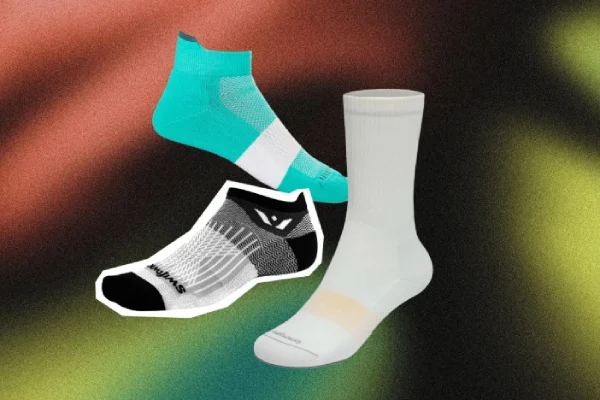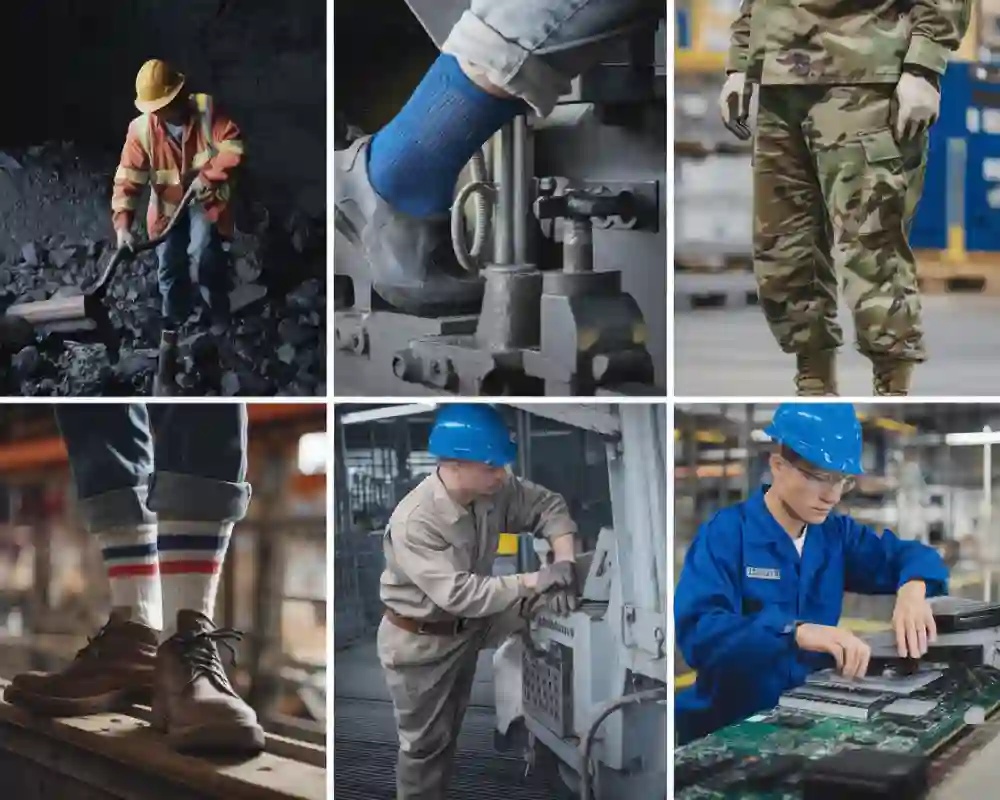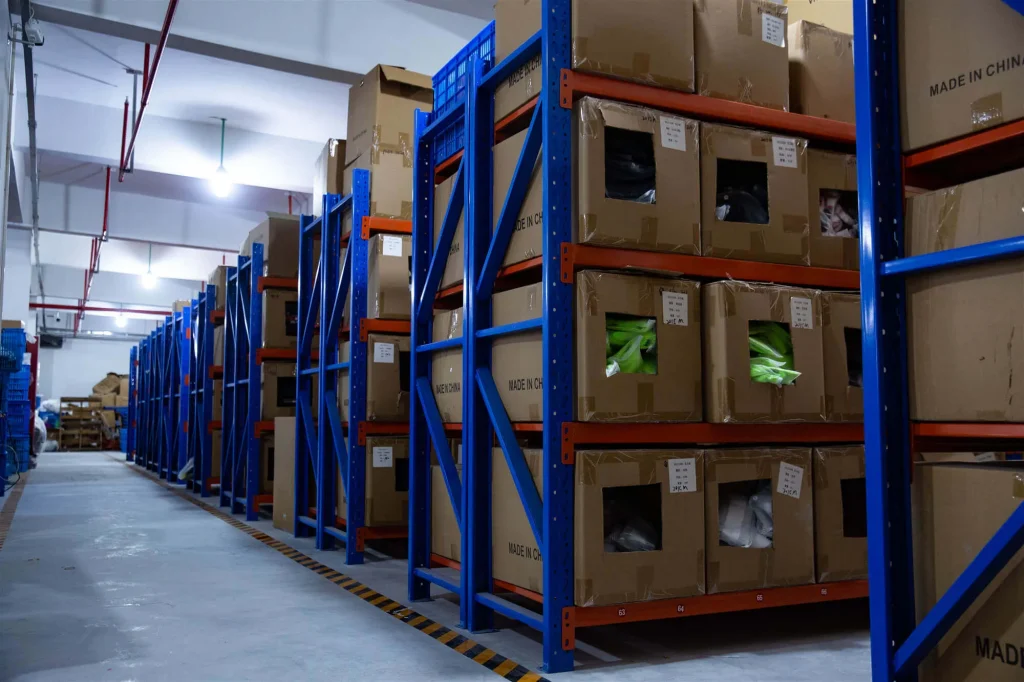Excessive foot sweating creates significant challenges for workers across numerous industries, particularly those spending long hours in enclosed footwear. The uncomfortable combination of dampness, odor, and skin irritation not only affects daily comfort but potentially leads to more serious foot health issues when left unaddressed. Many workers struggle to find effective solutions despite trying numerous sock options marketed for work environments.

This comprehensive guide explores the most effective sock solutions for managing sweaty feet in workplace environments, with particular focus on innovative materials, specialized construction techniques, and practical strategies for maintaining dry, comfortable feet throughout demanding shifts.
Understanding Why Feet Sweat Excessively in Work Environments
Foot perspiration in work settings stems from multiple factors beyond simple overheating. Enclosed safety footwear creates microenvironments with limited airflow and elevated temperatures, naturally increasing sweat production as the body attempts to regulate temperature. This effect becomes particularly pronounced in work boots with waterproof membranes or safety features that further restrict ventilation.
Occupational stress also significantly impacts perspiration levels through physiological responses to workplace pressure. The body’s natural reaction to stress includes increased sweat production, often concentrated in the hands and feet. For workers in high-pressure environments or those with demanding physical requirements, this stress-induced perspiration compounds the effects of environmental factors.
Max Hosiery’s research into workplace foot perspiration revealed that many workers experience cyclical sweating patterns throughout their shifts, with peak moisture production occurring during specific activity periods rather than consistently throughout the day. Our sock designs account for these fluctuation patterns, incorporating variable moisture management zones that adapt to changing perspiration levels throughout work periods.
The Science Behind Effective Moisture-Wicking in Work Socks
Effective moisture management in work socks relies on sophisticated material science rather than simple absorption capacity. True moisture-wicking involves active transport of perspiration away from skin surfaces through capillary action, moving moisture through specialized fiber structures to outer sock layers where evaporation can occur. This continuous transport process maintains relatively dry skin contact even during periods of heavy perspiration.
The microscopic structure of performance fibers plays a crucial role in this process. Quality moisture-wicking materials feature precisely engineered cross-sections with multiple channels that create capillary pressure, actively pulling moisture away from the skin rather than simply absorbing it. These specialized structures maintain their transport capabilities even when compressed within tight-fitting work boots.
Max Hosiery utilizes advanced hydrophobic fibers for skin-contact layers, creating surfaces that repel moisture while directing it toward secondary transport layers. This multi-stage approach prevents the saturation that occurs with simple absorption materials, maintaining consistent moisture movement regardless of perspiration levels. Our laboratory testing confirms significantly faster moisture transport rates compared to conventional work sock materials.
Superior Materials for Managing Workplace Foot Perspiration
Material selection forms the foundation of effective anti-perspiration work socks, with significant performance differences between fiber types. Synthetic performance fibers like polypropylene and modified polyesters offer exceptional moisture transport properties, moving perspiration away from the skin up to 15 times faster than traditional cotton. These engineered materials maintain their wicking capabilities throughout extended wear periods, even under challenging work conditions.
Merino wool provides another excellent option with unique natural advantages for workplace environments. Unlike traditional wool, fine-micron merino fibers transport moisture in vapor form before it condenses into liquid sweat, creating a drier skin sensation. Merino also offers natural temperature regulation and antimicrobial properties that reduce odor development during long shifts.
Max Hosiery develops proprietary fiber blends that combine the strengths of multiple materials for optimal workplace performance. Our hybrid constructions strategically position different fibers in specific sock zones based on typical workplace perspiration patterns. This targeted approach ensures maximum moisture management where workers need it most while maintaining durability in high-wear areas.
Critical Construction Features That Combat Workplace Foot Sweat
Beyond material selection, specific construction techniques significantly impact a work sock’s ability to manage moisture effectively. Mesh ventilation panels strategically positioned across high-perspiration zones allow continuous airflow that accelerates evaporation and heat release. These engineered ventilation systems work particularly well in steel-toe boots and other safety footwear where restricted airflow typically exacerbates sweat accumulation.
Targeted cushioning zones designed with moisture management channels prevent perspiration from pooling in high-pressure areas like the ball of the foot and heel. These specialized structures maintain small air gaps between foot and footwear even under weight-bearing conditions, allowing continuous moisture movement rather than compression-induced saturation.
Max Hosiery incorporates these advanced construction elements throughout our work sock collection. Our manufacturing process utilizes variable-density knitting that creates integrated ventilation systems without sacrificing durability or protection. This sophisticated approach ensures consistent moisture management across the entire foot surface regardless of weight distribution or movement patterns during work activities.
Addressing Specific Workplace Challenges Through Specialized Sock Design
Different occupational settings create unique moisture management challenges requiring specialized sock features. Construction and industrial environments typically involve significant physical exertion combined with safety footwear, creating high-heat conditions that demand maximum moisture transport capacity. Socks for these settings require robust wicking properties with reinforced durability at friction points.

Healthcare and service industry workers face different challenges, often involving extended standing periods with less intense physical activity but longer continuous wear times. These occupations benefit from socks with enhanced antimicrobial properties and graduated compression that prevents fluid accumulation while maintaining all-day comfort.
Max Hosiery offers industry-specific work sock collections designed for these varied occupational requirements. Our industrial series features maximum durability and moisture transport for physically demanding environments, while our service industry line emphasizes all-day comfort with odor control for customer-facing positions. This specialized approach ensures workers have appropriate moisture management solutions regardless of their specific workplace challenges.
The Critical Role of Antimicrobial Technologies in Sweat Management
Effective sweat management extends beyond simple moisture transport to addressing the microbial growth that causes odor and potential skin issues. Quality anti-perspiration work socks incorporate antimicrobial technologies that remain effective throughout long shifts and multiple wash cycles. These treatments target the bacteria that thrive in warm, moist environments, preventing both odor development and potential skin infections.
Silver-based antimicrobial treatments provide particularly effective protection in work environments. Silver ions naturally inhibit bacterial reproduction without irritating skin or losing effectiveness over time. This approach offers significant advantages over temporary chemical treatments that quickly wash out or lose potency after minimal use.
Max Hosiery incorporates permanent antimicrobial technologies throughout our work sock collection. Our silver-infused yarns maintain their protective properties through hundreds of wash cycles, ensuring consistent performance throughout the product lifespan. This lasting protection proves particularly valuable for workers completing multiple consecutive shifts without opportunity for sock changes.
Anatomical Design Considerations for Maximum Sweat Control
Sock fit and anatomical design significantly impact moisture management effectiveness. Generic tube-shaped socks create excess material that bunches during movement, creating friction points where perspiration accumulates and potentially causes blisters. Conversely, anatomically shaped socks maintain consistent contact with foot surfaces, ensuring continuous moisture transport throughout active workdays.
Left/right specific designs represent the gold standard for workplace moisture management, maintaining precise fit during movement that prevents the rotation and bunching common with conventional socks. This consistent positioning ensures moisture-wicking materials remain in contact with high-perspiration zones regardless of activity level or movement patterns.
Max Hosiery utilizes 3D knitting technology to create anatomically correct work socks that maintain optimal positioning throughout active workdays. Our sizing system accounts for both length and volume measurements, ensuring appropriate fit across diverse foot shapes. This precision fit approach significantly enhances moisture management performance compared to generic sizing systems based solely on shoe size.
Seasonal Adaptations for Year-Round Sweat Management
Environmental conditions significantly impact work sock requirements throughout the year, necessitating seasonal adaptations for consistent moisture control. Summer work environments demand maximum moisture transport capacity and rapid evaporation properties to manage increased perspiration. Lightweight materials with extensive ventilation systems provide optimal hot-weather performance while maintaining necessary durability for workplace demands.
Winter conditions create different challenges, requiring moisture management without sacrificing essential warmth. Cold-weather work socks must transport perspiration effectively while maintaining insulation properties, preventing the dangerous cooling effect that damp socks create in low temperatures. This balance requires sophisticated material combinations that separate moisture management from thermal regulation functions.
Max Hosiery produces season-specific work sock collections engineered for these varying environmental challenges. Our summer-weight options maximize ventilation and evaporation, while winter designs incorporate thermal zones that maintain warmth without compromising moisture transport. This specialized approach ensures year-round comfort regardless of workplace conditions or seasonal extremes.
Addressing Specific Medical Conditions That Increase Workplace Foot Sweating
Certain medical conditions create additional moisture management challenges requiring specialized sock solutions. Hyperhidrosis (excessive sweating) demands maximum moisture-handling capacity with enhanced antimicrobial protection to prevent related skin complications. Workers with this condition benefit from socks specifically engineered for extreme perspiration scenarios rather than standard moisture-wicking options.
Diabetes presents unique considerations, as moisture management must occur without creating pressure points or skin irritation that could lead to complications. Diabetic-friendly moisture-wicking socks feature seamless construction and non-binding tops while still providing effective perspiration control through specialized materials and construction.
Max Hosiery develops specialized sock solutions for workers with these specific conditions. Our medical-grade moisture management line incorporates advanced technologies that address extreme perspiration while providing enhanced protection against related complications. These specialized products help workers with challenging foot conditions maintain workplace performance and comfort despite their unique requirements.
Proper Care Routines To Maintain Anti-Perspiration Performance
Washing and care practices significantly impact the long-term moisture management performance of work socks. Improper laundering can degrade wicking properties, reduce antimicrobial effectiveness, and compromise the structural integrity that maintains proper fit. Understanding appropriate care techniques helps preserve these essential functions throughout the product lifespan.
Avoiding fabric softeners represents perhaps the most important care consideration, as these products leave residues that block the microscopic channels responsible for moisture transport. Similarly, high-heat drying can damage synthetic performance fibers and reduce their wicking capabilities over time. Cold or warm water washing followed by air drying or low-heat machine drying best preserves moisture management properties.
Max Hosiery provides detailed care instructions with all work sock purchases, helping customers maintain optimal performance through appropriate laundering practices. Our testing confirms that properly maintained work socks retain their moisture management capabilities through significantly more wash cycles than those subjected to harsh detergents, fabric softeners, or excessive heat.
The Importance of Proper Sock Rotation for Consistent Dryness
Even the most advanced anti-perspiration socks require appropriate rotation practices to maintain optimal performance. Wearing the same socks for consecutive days significantly reduces their moisture management effectiveness, as residual dampness and accumulated skin cells compromise both wicking properties and hygiene. Establishing proper sock rotation systems proves essential for consistent workday comfort.
The ideal rotation schedule includes a minimum of 5-7 pairs for full-time workers, allowing complete drying between wearings. This rotation prevents the microbial growth and material degradation that occurs when damp socks are reused without adequate recovery time. For particularly demanding environments or workers with excessive perspiration, even more extensive rotation systems may prove beneficial.
Max Hosiery offers value packs specifically designed to establish proper rotation systems at reasonable cost. Our multi-pack options provide consistent performance across all included pairs, ensuring workers maintain appropriate moisture management throughout their rotation schedule. This practical approach recognizes that even premium moisture-wicking technology requires proper usage protocols to deliver consistent benefits.
Complementary Strategies for Comprehensive Foot Sweat Management
While advanced anti-perspiration socks form the foundation of effective workplace foot care, comprehensive management benefits from complementary practices. Appropriate footwear selection significantly impacts overall moisture conditions, with breathable safety options enhancing sock performance through improved air circulation and evaporation capacity.
Foot powders and antiperspirants designed specifically for feet can supplement sock performance in extreme cases. These products reduce perspiration production at the source while providing additional antimicrobial protection. When used in conjunction with quality moisture-wicking socks, they create comprehensive systems for managing even severe workplace foot sweating.
Max Hosiery provides educational resources covering these complementary strategies alongside our sock products. Our comprehensive approach recognizes that optimal foot comfort often requires multiple solutions working together, particularly in challenging work environments or for individuals with naturally high perspiration levels. This holistic perspective helps workers develop complete systems for workplace foot health.
Real-World Performance: Feedback From Workers Across Industries
Practical experience from workers across various industries provides valuable insights into anti-perspiration sock performance beyond laboratory testing. Construction professionals consistently report that quality moisture-wicking socks significantly reduce blister formation during active workdays, particularly when properly fitted and rotated. This real-world benefit translates directly to improved comfort and productivity.
Healthcare workers highlight the infection prevention benefits of antimicrobial moisture management socks during long shifts. The combination of perspiration control and microbial inhibition creates healthier foot environments despite the challenging conditions of medical settings. Many report noticeable reductions in foot odor and irritation after switching from conventional options.
Max Hosiery maintains ongoing feedback programs with workers across multiple industries, continuously gathering performance data that informs product refinement. This real-world testing complements our laboratory research, ensuring that theoretical moisture management advantages translate to practical benefits in actual workplace conditions. The insights gained through these programs drive continuous improvement throughout our product development process.
Cost-Benefit Analysis: The True Value of Quality Anti-Perspiration Work Socks
Quality anti-perspiration work socks typically require greater initial investment than basic cotton alternatives, prompting legitimate value questions from cost-conscious workers. Understanding the complete economic picture requires considering factors beyond purchase price, including durability, performance benefits, and potential health implications of inadequate moisture management.
Premium moisture-wicking socks generally deliver substantially longer useful lifespans than basic options, often lasting 3-5 times longer before requiring replacement. This durability significantly reduces the actual cost-per-wearing despite higher initial purchase prices. Additionally, the blister prevention and improved foot health associated with proper moisture management can reduce potential lost work time and medical expenses.
Max Hosiery focuses on delivering maximum value through optimal combinations of performance and durability. Our work sock engineering prioritizes extended functional lifespan alongside advanced moisture management, ensuring customers receive appropriate return on their sock investment. This balanced approach recognizes that true value comes from consistent performance throughout numerous work shifts rather than minimal initial cost.
Future Innovations in Workplace Moisture Management
Moisture management technology continues evolving through material science advancements and deeper understanding of workplace requirements. Emerging technologies like phase-change materials offer potential for responsive moisture control that adapts to changing conditions throughout work shifts. These materials actively adjust their properties based on temperature and moisture levels, providing dynamic rather than static performance.
Biodegradable synthetic fibers represent another promising development, potentially offering the performance benefits of traditional synthetics with reduced environmental impact. These materials maintain excellent moisture transport properties while decomposing more readily at end-of-life, addressing sustainability concerns without compromising workplace performance.
Max Hosiery maintains leadership in this evolving field through continuous research and development partnerships with material scientists and workplace safety experts. Our innovation pipeline includes several next-generation moisture management technologies currently undergoing field testing across various occupational environments. This commitment to advancement ensures our customers benefit from the latest moisture control developments as they become commercially viable.
Conclusion
Effective moisture management represents a critical consideration for workers across numerous industries, with appropriate sock selection playing a central role in daily comfort and long-term foot health. The best anti-perspiration work socks combine advanced moisture-wicking materials, specialized construction techniques, and targeted features addressing specific workplace challenges. This comprehensive approach moves beyond simple absorption to active moisture transport systems that maintain dry comfort throughout demanding shifts.

Max Hosiery remains committed to developing premium work socks that address the specific moisture management needs of various occupational environments. Our continuous research and workplace partnerships ensure products that deliver meaningful benefits for workers dealing with excessive foot perspiration. The thoughtful engineering throughout our work sock collection reflects deep understanding of how proper moisture management supports workplace performance and comfort.
Whether you’re standing for extended periods, working in variable environmental conditions, or simply dealing with naturally sweaty feet, quality anti-perspiration work socks provide valuable benefits worth the investment. The right pair can transform daily discomfort into consistent dry comfort throughout even the most demanding work shifts.
FAQs
How many pairs of anti-perspiration work socks should I rotate through each week?
For full-time workers, maintaining a rotation of at least 5-7 pairs allows proper drying between uses and extends sock lifespan, with those in extremely demanding environments potentially benefiting from even more extensive rotation.
Can anti-perspiration work socks completely eliminate foot odor?
Quality moisture-wicking socks with antimicrobial properties significantly reduce but may not completely eliminate odor, particularly in extreme cases; they work best as part of a comprehensive foot hygiene routine.
Are synthetic materials better than natural fibers for managing sweaty work feet?
Specialized synthetic materials typically offer superior pure wicking performance, while natural options like merino wool provide excellent moisture management with additional benefits like temperature regulation and natural antimicrobial properties.
How long should quality anti-perspiration work socks last?
Premium anti-perspiration work socks typically maintain their performance through 50-100 full workdays when properly maintained, though exact lifespan varies based on work conditions, rotation practices, and laundering methods.
Can compression socks help with sweaty feet in work environments?
Graduated compression socks can complement moisture management by improving circulation and preventing fluid accumulation, though they should still incorporate proper moisture-wicking materials to address perspiration effectively.
